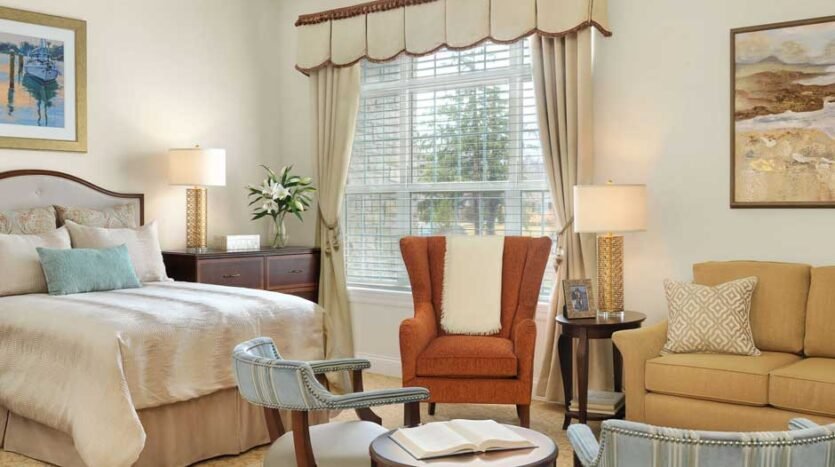A Place to Thrive: Ensuring Comfort in Senior Living Spaces
Creating an environment that feels like home is essential for senior living spaces. It’s not just about meeting basic needs but also about fostering a sense of comfort, independence, and dignity. Well-designed senior living spaces can enhance physical health, emotional well-being, and cognitive engagement, contributing to a thriving life for residents.
Understanding the Needs of Senior Residents
Designing senior living spaces begins with understanding residents’ unique needs. These often fall into three broad categories:
Physical Comfort
Seniors typically face health challenges such as reduced mobility, joint pain, or chronic conditions. Physical comfort should address these issues with ergonomic furniture, easily navigable layouts, and adjustable features like chairs or beds. Adequate temperature control and proper seating arrangements play an equally significant role in maintaining physical ease.
Emotional Well-Being
Living spaces aren’t just physical locations; they’re personal sanctuaries. Incorporating elements that allow seniors to feel secure, independent, and valued is key. Spaces that encourage meaningful social interaction, offer personal touches, and convey warmth can have a significant emotional impact.
Cognitive Stimulation
To thrive, seniors need environments that engage not only their bodies but also their minds. Living spaces should incorporate features that encourage learning, exploration, and interaction. This includes opportunities for hobbies, communal activities, and, increasingly, exposure to age-appropriate technology.
Designing with these needs in mind ensures a higher quality of life, setting the foundation for a comfortable and enriching environment for seniors.
Creating Comfortable Physical Spaces
Physical design elements are central to fostering comfort. Here are some integral considerations when crafting senior living spaces:
Furniture and Layout
Furniture should prioritize both comfort and functionality. Chairs should be supportive, with armrests and ergonomic designs to assist with sitting and standing. Tables and shelves need to be at accessible heights, avoiding strain. Open, clutter-free layouts reduce navigation challenges and prevent fall risks, allowing residents to move freely.
Lighting and Temperature
A well-lit space uplifts spirits and ensures safety. Natural light has been shown to boost mood and regulate sleep patterns, making large windows and skylights essential. At night, soft, warm lighting prevents glare and minimizes disruptions. Additionally, effective temperature control systems keep spaces cozy in winter and cool in summer, ensuring year-round comfort.
Accessibility and Safety
Safety and mobility are vital considerations in senior living spaces. Features like grab bars in bathrooms, non-slip flooring, and ramps instead of stairs make a massive difference. While larger projects, such as the addition of an elevator for home, like those available in Reno, NV, may also be considered, even small upgrades like lever-style door handles and wide hallways contribute significantly to accessibility. Every detail counts.
Fostering Emotional Well-Being
Nurturing emotional well-being requires spaces and experiences that provide residents with joy, connection, and a sense of belonging.
Social Interaction
Isolation is a common challenge for seniors, often leading to feelings of loneliness or depression. Shared lounges, community gardens, and dining areas encourage residents to build relationships and engage in activities together. Regularly planned events, such as game nights or group walks, can deepen these connections.
Personalization
Giving seniors the autonomy to personalize their living spaces fosters independence while making the area feel personal and inviting. Whether it’s hanging cherished family photos or choosing favorite colors for cushions and bedspreads, these small touches help create a home-like atmosphere.
Connection to Nature
Access to nature has a calming and restorative effect. Courtyards, walking paths, and indoor greenery can bring the outdoors to seniors. Rooms with views of trees or gardens also create a soothing, tranquil ambiance.
Engaging Cognitive Stimulation
Engaging the minds of seniors is just as vital as addressing their physical or emotional needs. Thoughtful programming and tools can positively affect cognitive health, mental flexibility, and happiness.
Activities and Programs
Offer a variety of activities that cater to residents’ interests. Art classes, book clubs, fitness sessions, and music therapy aren’t just fun; they challenge the brain and keep the mind sharp. Structured group programs and independent activities should strike a balance to accommodate varying preferences.
Lifelong Learning
The desire to learn doesn’t diminish with age. Many educational programs are now tailored for seniors, giving them access to online classes or in-person workshops. Whether it’s learning a new language, trying photography, or exploring history, these experiences spark curiosity and growth.
Conclusion
Comfort in senior living spaces is about more than practical design. Meeting physical needs, fostering emotional connections, and engaging the mind create environments where seniors thrive. Well-designed, accessible, and welcoming homes offer more than shelter—they provide a foundation for a better life. Whether you’re upgrading a facility or helping loved ones, remember that every thoughtful detail adds to comfort and joy.


